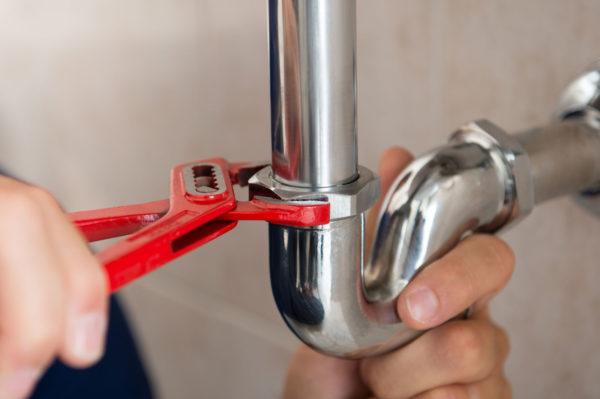On this page below you will find a bunch of brilliant answers regarding Understanding the Basics of Your Home's Plumbing System.

Plumbing is an essential element of any kind of home, in charge of supplying clean water for alcohol consumption, cooking, and showering, along with removing wastewater securely. Comprehending the essentials of home plumbing is vital for every property owner to guarantee correct upkeep, troubleshooting, and, if required, repairs. In this novice's overview, we'll cover the basic principles of home plumbing to assist you end up being extra accustomed to how it functions.
Supply Of Water System
The water supply system brings clean water right into your home from a municipal water source or a private well. It contains a primary water line that connects to your home's plumbing system, typically located underground. A water meter determines the quantity of water consumed, while a shut-off valve permits you to regulate the circulation of water right into your home.
Plumbing Fixtures
Plumbing components are devices that provide water to various parts of your home and include sinks, taps, toilets, showers, bath tubs, and devices such as dishwashers and washing equipments. Each component is attached to the water system system using pipes and fittings and might have its shut-off valve for maintenance or emergencies.
Water Heating System
The water heater is responsible for heating water for domestic use, consisting of showering, food preparation, and cleansing. Common sorts of water heaters include tank-type hot water heater, tankless (on-demand) hot water heater, and heat pump water heaters. The water heater is linked to the supply of water system and supplies warm water to plumbing components as needed.
Water drainage System
The drainage system eliminates wastewater from your home and carries it away to a sewage therapy center or septic system. It includes a network of pipes, installations, and components that transfer wastewater from plumbing components to the primary drain line or sewage-disposal tank. Appropriate drain is important to stop obstructions, backups, and sewage leaks.
Air flow System
The air flow system aids maintain correct air pressure and stop drain gases from entering your home. Vent pipelines, also called vent heaps, expand from plumbing components to the roof covering, enabling drain gases to escape safely outdoors. Air flow pipes also permit air to get in the drain system, promoting smooth wastewater flow and avoiding suction or vacuum effects.
Typical Plumbing Tools
Having the right tools on hand is essential for carrying out standard plumbing repair services and maintenance jobs. Common plumbing devices include adjustable wrenches, pipe wrenches, pliers, pipeline cutters, hacksaws, bettors, augers (or drainpipe serpents), and Teflon tape. Having these tools readily available can help you tackle small plumbing problems efficiently.
Basic Plumbing Repair Services
While some plumbing repair work may call for expert support, lots of typical issues can be resolved with basic do it yourself strategies. Learning just how to repair a leaky faucet, unclog a drainpipe, change a bathroom flapper, or repair a trickling showerhead can conserve you time and money on plumbing fixings.
Verdict
Recognizing the essentials of home plumbing is necessary for each property owner to preserve a secure, practical, and effective plumbing system. By acquainting on your own with the water supply system, plumbing fixtures, drainage system, air flow system, typical plumbing devices, and basic fixings, you can with confidence attend to minor plumbing issues and guarantee your home's plumbing system runs smoothly.
Understanding Basics of Home Plumbing System: A Beginner's Guide
The Main Components of Your Home Plumbing System
The Water Supply System
This system is responsible for transporting fresh water into your home. It usually has a main water line that splits into two branches: one directed towards cold water services and the other connected to a water heater for hot water. The pressure is key here; it ensures water reaches all parts of your house.
The Drainage System
Once water has been used, it becomes wastewater that needs to be removed from your home. This is where the drainage system comes into play. It includes all the pipes that carry wastewater and sewage away from your house to sewage treatment facilities or septic tanks.
The Vent System
The vent system prevents sewer gases from entering your home and helps maintain the pressure balance that allows wastewater to flow out properly. These vents usually exit through the roof of your house.
Water Heating System
For those who enjoy hot showers or using hot water for cleaning, the water heater is a crucial part of the plumbing system. It can be a tankless system, which heats water on demand, or a traditional water tank model.
Common Plumbing Problems and Basic Troubleshooting
Plumbing systems, while designed to be durable, can face issues like clogged drains, leaky faucets, or low water pressure. Here are some basic troubleshooting tips:
Clogged Drains
Use a plunger or a plumber's snake to try and dislodge whatever is blocking the drain. Regular cleaning can prevent clogs.
Leaky Faucets
Often caused by worn-out washers or gaskets, these can usually be replaced by someone with basic DIY skills.
Low Water Pressure
This might be due to sediment build-up in your fixtures or a leak somewhere in your water line. Cleaning out aerators or seeking a professional to detect leaks might be necessary.
Preventive Maintenance Tips
Maintaining your plumbing system is key to avoiding emergencies. Regularly check for leaks, avoid disposing of grease down the sink, and have your system inspected by a professional plumber at least once a year.

I ran across that article about Plumbing Basics Every Homeowner Should Know when doing a search on the internet. Appreciated our write-up? Please share it. Help someone else locate it. I thank you for your readership.
Click Here
Comments on “Mastering the Essentials of Home Plumbing: A Beginner's Introduction”